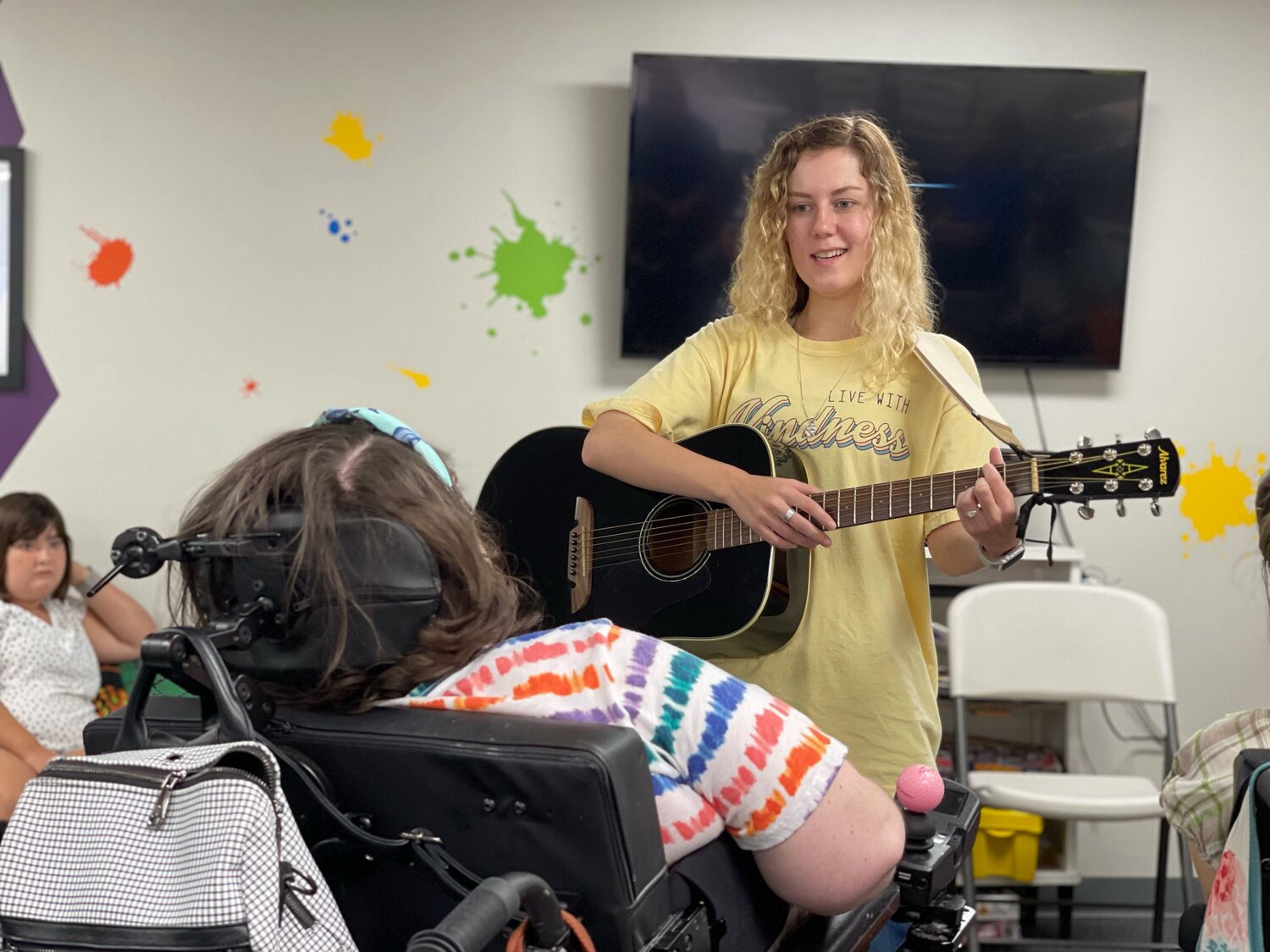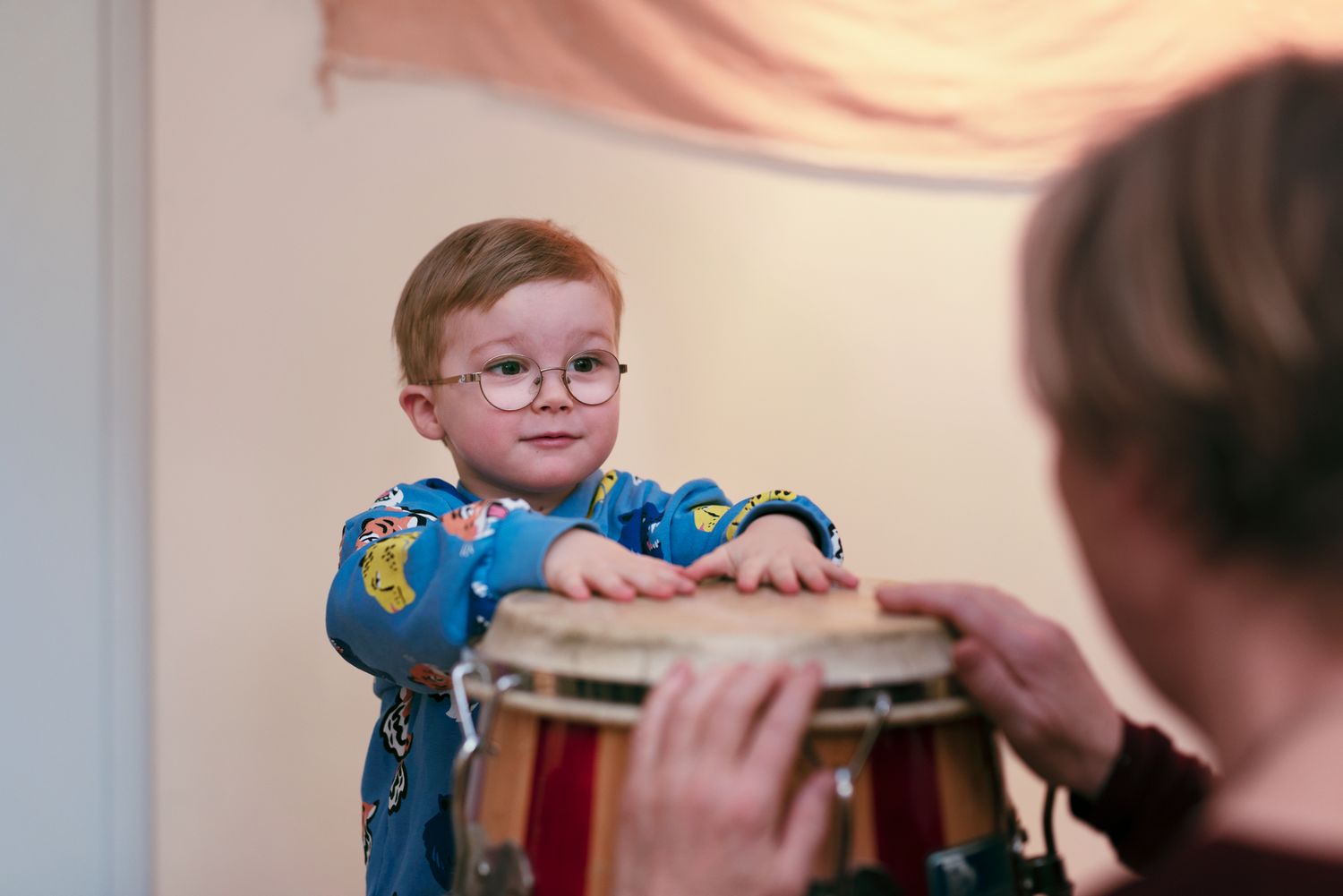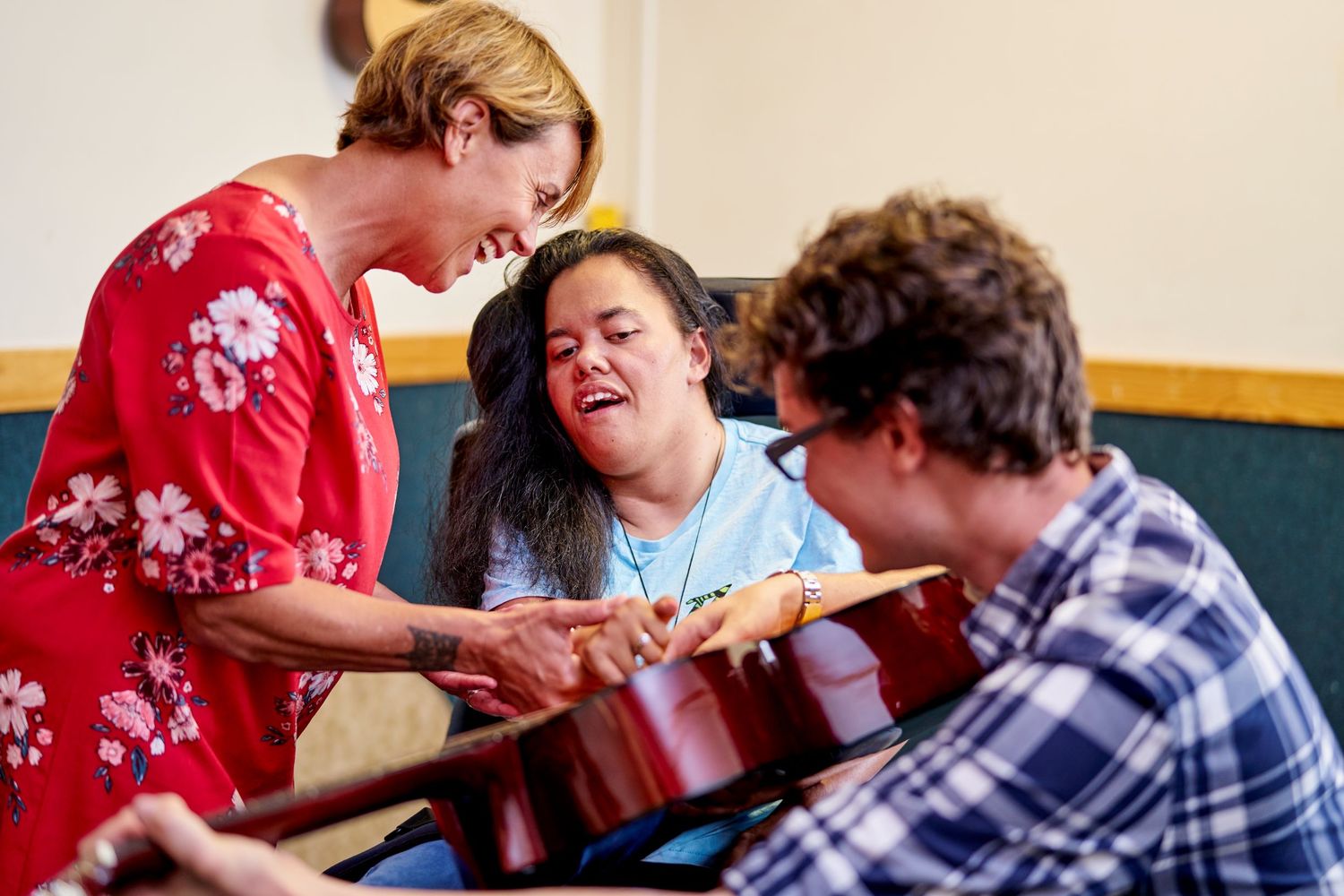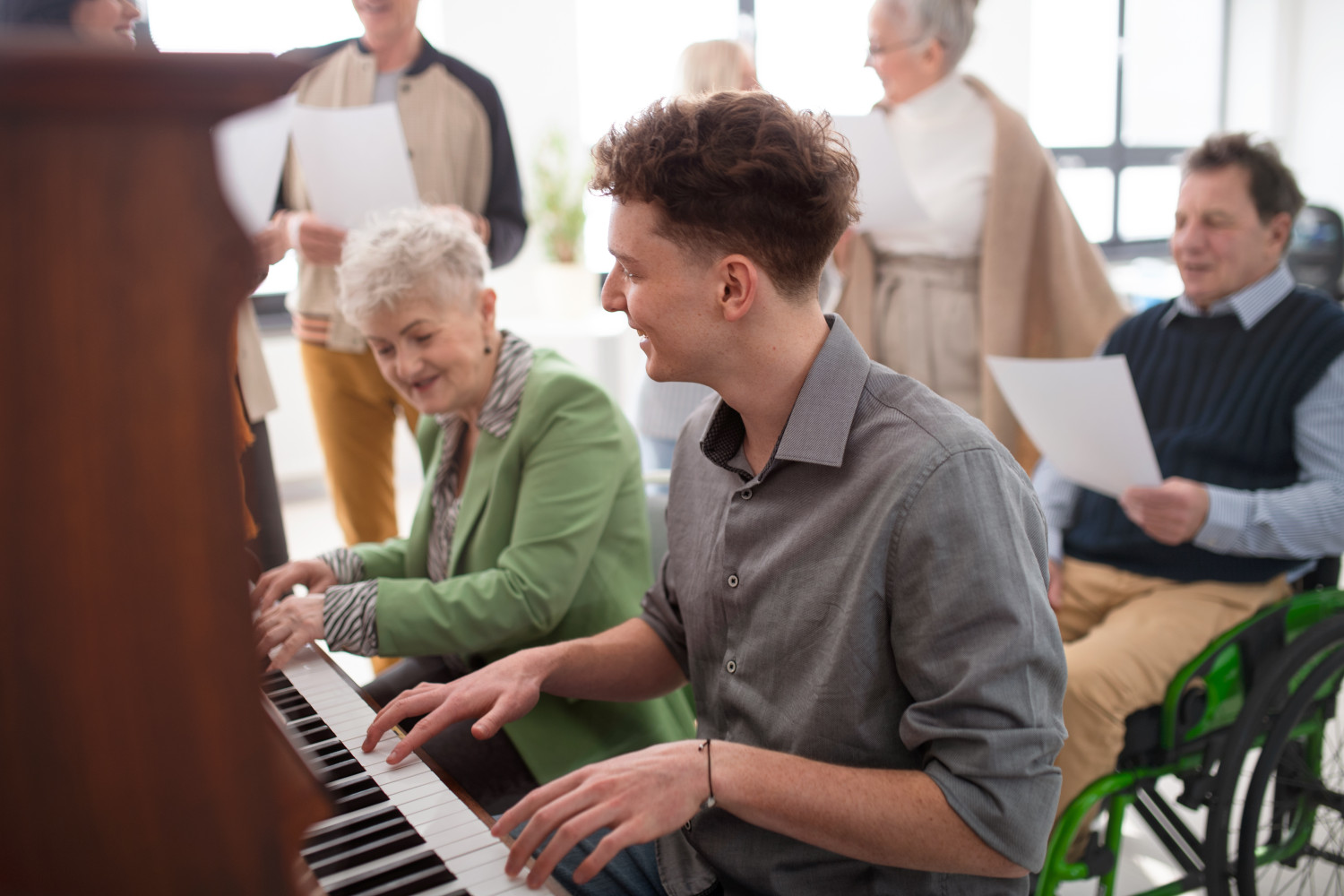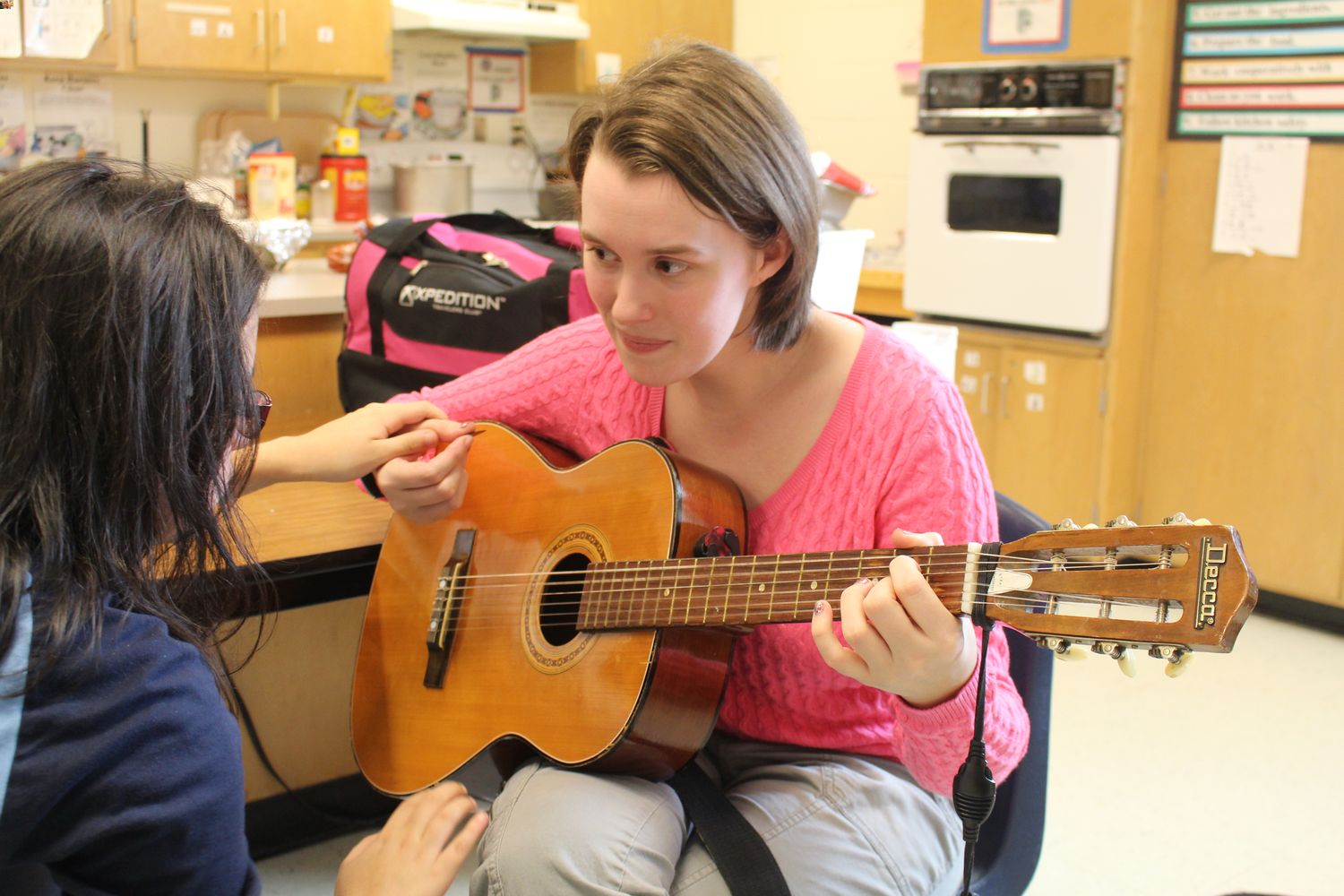Home>Events & Info>Music Therapy>Music Therapy What Is The Treatment Objective Of RAS
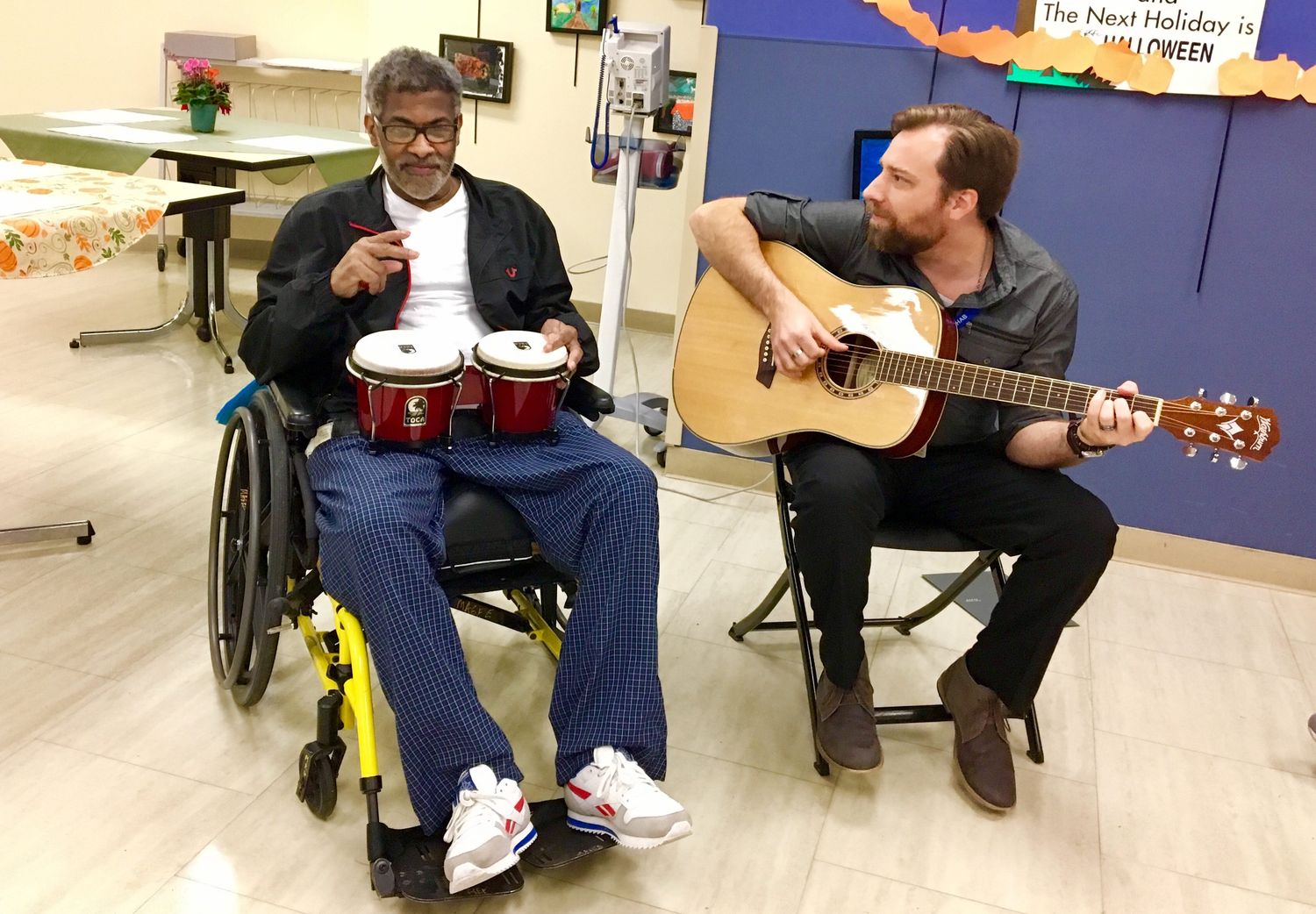

Music Therapy
Music Therapy What Is The Treatment Objective Of RAS
Published: February 1, 2024
Discover the treatment objective of RAS with music therapy. Uncover the transformative power of music to heal, calm, and uplift your mind and body.
(Many of the links in this article redirect to a specific reviewed product. Your purchase of these products through affiliate links helps to generate commission for AudioLover.com, at no extra cost. Learn more)
Table of Contents
Introduction
Welcome to the world of music therapy, a fascinating field that harnesses the power of music for therapeutic purposes. Music therapy is an evidence-based practice that utilizes music to address physical, emotional, cognitive, and social needs of individuals of all ages. It is a holistic approach that integrates the art and science of music to promote overall well-being and improve quality of life.
Through the strategic use of music, music therapists work with clients to achieve various treatment objectives. One specific approach within music therapy that has gained significant attention is the Rhythmic Auditory Stimulation (RAS) approach.
RAS involves the use of carefully selected rhythmic auditory cues to stimulate and facilitate movement and communication. By synchronizing music with specific movements or tasks, RAS aims to enhance motor skills, coordination, and cognitive functioning.
In this article, we will explore the Rhythmic Auditory Stimulation (RAS) approach in music therapy, its definition and explanation, as well as the benefits it offers for individuals undergoing music therapy sessions.
So, let’s dive into the world of Rhythmic Auditory Stimulation and discover how it works its magic in music therapy!
What is Music Therapy?
Music therapy is a professional field that utilizes the power of music to address physical, emotional, cognitive, and social needs of individuals. It is a client-centered practice that is conducted by trained and certified music therapists who possess strong musical skills as well as knowledge in psychology, human development, and therapeutic techniques.
Music therapists work with a wide range of populations, including children, adults, and seniors, who may be experiencing various challenges such as developmental disabilities, mental health disorders, physical impairments, and neurologic conditions. They use music as a medium to establish a therapeutic relationship, facilitate self-expression, promote emotional release, improve communication, and enhance overall well-being.
During a music therapy session, a variety of musical elements are utilized, including rhythm, melody, harmony, and lyrics. Live music-making, playing instruments, singing, and listening to music are all part of the therapeutic process. The music therapist adapts the interventions and techniques to meet the unique needs and goals of each individual.
Music therapy has been scientifically proven to have numerous benefits. It can help reduce stress and anxiety, enhance mood, improve cognitive functioning, boost self-esteem, enhance communication skills, and promote physical rehabilitation. It provides a safe and engaging environment for individuals to explore their emotions, express themselves, and develop new coping strategies.
Music therapy can be conducted in various settings, including hospitals, rehabilitation centers, schools, mental health facilities, and private practices. It is a versatile and flexible form of therapy that can be tailored to meet the specific needs and goals of each individual.
Overall, music therapy is a powerful and effective approach that harnesses the unique qualities of music to promote healing, growth, and well-being. It offers individuals a means of self-expression and communication that transcends traditional verbal and cognitive approaches. Through the use of music, individuals can tap into their inner strengths, find joy, and discover new possibilities.
The Rhythmic Auditory Stimulation (RAS) Approach
The Rhythmic Auditory Stimulation (RAS) approach is a specific technique used within music therapy to enhance motor skills, coordination, and cognitive functioning. It involves the use of rhythmic auditory cues that are synchronized with specific movements or tasks to facilitate successful performance.
In RAS, music therapists strategically select and manipulate the tempo, rhythm, and beat of the music to stimulate desired movements and actions. These auditory cues provide a rhythmic framework that helps individuals synchronize their movements and regulate their actions.
The RAS approach has been particularly effective for individuals with motor impairments, such as those with Parkinson’s disease, stroke survivors, and individuals with gait disorders. By providing a rhythmic structure, RAS can improve walking, balance, and overall motor coordination.
The rhythmic cues used in RAS can also be applied to non-motor tasks, such as speech and language exercises. For example, individuals with speech difficulties can benefit from rhythmic auditory cues that facilitate the timing and rhythm of their speech. This can improve articulation, fluency, and overall communication skills.
One of the key principles of RAS is the “entrainment” phenomenon, where the body synchronizes its movements with the external rhythmic cues. This entrainment effect occurs because the brain naturally seeks to match the rhythm presented by the music. By harnessing this natural inclination, RAS can help individuals regulate their movements and achieve smoother and more coordinated actions.
It is important to note that the selection of rhythmic cues in RAS is personalized and tailored to the individual’s specific needs and abilities. Music therapists assess the individual’s motor and cognitive functioning and design interventions that best support their goals.
RAS can be delivered in various ways, such as walking or exercising to a specific rhythm, clapping or tapping along with the music, or using instruments to create rhythmic patterns. The choice of musical genre and style also plays a role in the effectiveness of the intervention, as individuals may respond differently to different types of music.
Overall, the Rhythmic Auditory Stimulation (RAS) approach in music therapy provides a structured and rhythmic framework that facilitates movement, coordination, and cognitive functioning. By leveraging the power of music and rhythm, individuals can improve their motor skills, speech and language abilities, and overall quality of life.
Definition and Explanation of RAS
Rhythmic Auditory Stimulation (RAS) is a specific therapeutic technique used in the field of music therapy. It involves the use of carefully selected rhythmic auditory cues to stimulate and facilitate movement, coordination, and cognitive functioning in individuals. The primary goal of RAS is to enhance motor skills and improve overall physical and cognitive functioning.
RAS works by synchronizing external rhythmic cues, typically in the form of music, with desired movements or tasks. These cues serve as a guide for individuals to regulate their movements, providing a structured and rhythmic framework for their actions. The rhythmic cues can be in the form of beat, tempo, rhythm, or musical patterns, and are carefully chosen based on the individual’s abilities and treatment goals.
By aligning the movements with the rhythmic cues, RAS aims to address motor impairments, such as difficulties with coordination, balance, and gait. The rhythmic structure helps individuals improve their movement accuracy, timing, and smoothness. It can also increase motivation and engagement during therapy sessions, making the process more enjoyable and effective.
Moreover, RAS has shown promising results in individuals with cognitive impairments, as the rhythmic cues can help improve attention, memory, and cognitive processing. The rhythmic patterns and timing provided by the auditory cues stimulate the brain’s neural networks involved in motor and cognitive functions, promoting neuroplasticity and facilitating positive changes in these areas.
The use of music in RAS adds another layer of complexity to the therapeutic process. Music has inherent emotional and expressive qualities that can further engage and stimulate individuals during therapy. The rhythmic auditory cues in music can evoke emotional responses, enhance mood, and provide a sense of enjoyment and pleasure. This emotional connection to music can also have a positive impact on the overall therapeutic experience and outcome.
It is important to note that RAS is a personalized and dynamic approach. The selection of rhythmic cues, tempo, and musical genres is based on the individual’s specific needs, abilities, and preferences. Music therapists assess the individual’s motor and cognitive functioning and create interventions that are tailored to their unique goals and challenges.
RAS can be implemented in various settings, such as one-on-one sessions with a music therapist, group therapy, or even as a home-based intervention. The duration and frequency of RAS sessions depend on the individual’s needs and progress, and may vary from short, focused sessions to longer, integrated sessions as part of a comprehensive treatment plan.
In summary, Rhythmic Auditory Stimulation (RAS) is a specialized technique within music therapy that utilizes rhythmic auditory cues to facilitate movement, coordination, and cognitive functioning. By aligning movements with the rhythmic cues, RAS aims to improve motor skills, enhance cognitive functioning, and promote overall well-being and quality of life.
Benefits of RAS in Music Therapy
The Rhythmic Auditory Stimulation (RAS) approach in music therapy offers a range of benefits for individuals with various motor and cognitive challenges. By utilizing rhythmic auditory cues to facilitate movement, coordination, and cognitive functioning, RAS can have a positive impact on individuals’ overall well-being and quality of life.
Here are some key benefits of RAS in music therapy:
- Improved motor skills: RAS can enhance motor skills by providing a structured framework for movement. The rhythmic cues synchronize with desired movements, promoting coordination, balance, and gait. This is particularly beneficial for individuals with motor impairments, such as Parkinson’s disease, stroke, or gait disorders.
- Enhanced cognitive functioning: The rhythmic patterns and timing provided by RAS can stimulate cognitive processes, such as attention, memory, and executive functioning. By engaging the brain’s neural networks involved in motor and cognitive functions, RAS promotes neuroplasticity and facilitates positive changes in these areas.
- Increased motivation and engagement: The use of rhythmic cues in RAS can increase motivation and engagement during therapy sessions. The structured and enjoyable nature of the intervention can help individuals remain focused and actively participate in their therapy, leading to better outcomes.
- Improved emotional well-being: Music has inherent emotional and expressive qualities that can positively impact emotional well-being. The rhythmic auditory cues in RAS can evoke emotional responses, enhance mood, and provide a sense of enjoyment and pleasure during therapy sessions.
- Enhanced communication skills: RAS can improve speech and language abilities by utilizing rhythmic cues to facilitate the timing, rhythm, and fluency of speech. This is particularly beneficial for individuals with speech difficulties, such as those with aphasia or stuttering.
- Stress reduction and relaxation: Engaging in RAS activities can promote relaxation, reduce stress, and provide a sense of calm for individuals. The rhythmic patterns and musical elements in RAS can help individuals release tension and experience a state of relaxation.
It is important to note that the benefits of RAS may vary depending on the individual’s specific needs, abilities, and treatment goals. Music therapists assess each individual and design interventions that are tailored to their unique circumstances, maximizing the potential benefits of RAS.
Overall, the Rhythmic Auditory Stimulation (RAS) approach in music therapy provides a powerful and effective tool for enhancing motor skills, coordination, cognitive functioning, and overall well-being. Through the strategic use of rhythmic cues and music, individuals can experience improved physical and cognitive abilities, as well as an enhanced sense of joy and engagement during their therapeutic journey.
Treatment Objectives of RAS in Music Therapy
The Rhythmic Auditory Stimulation (RAS) approach in music therapy involves specific treatment objectives aimed at addressing motor and cognitive challenges. Through the use of rhythmic auditory cues, RAS can help individuals achieve various therapeutic goals and improve their overall functioning and quality of life.
Here are some common treatment objectives of RAS in music therapy:
- Improving motor coordination: One primary objective of RAS is to enhance motor coordination and control. By synchronizing movements with rhythmic cues, individuals can improve their ability to execute smooth and coordinated actions. This can be particularly beneficial for individuals with motor impairments, such as Parkinson’s disease or stroke survivors.
- Enhancing balance and gait: RAS can focus on improving balance and gait in individuals who experience difficulties in these areas. The rhythm and timing provided by rhythmic cues can help individuals regulate their movements, resulting in improved stability and mobility.
- Promoting motor planning and sequencing: RAS can target the development and improvement of motor planning and sequencing skills. By using rhythmic cues, individuals can learn to coordinate and sequence their movements in a structured and organized manner.
- Facilitating speech and language: RAS can be utilized to support speech and language therapy goals. Rhythmic cues can help individuals with speech difficulties improve their articulation, fluency, and overall communication skills by synchronizing speech movements with the rhythmic patterns provided.
- Improving cognitive functioning: RAS can have positive effects on cognitive functioning, such as attention, memory, and executive functioning. The rhythmic cues can stimulate the brain’s neural networks involved in these functions, enhancing cognitive processing and overall cognitive abilities.
- Promoting relaxation and stress reduction: RAS can be used to promote relaxation and reduce stress. Engaging in rhythmic activities with calming and soothing music can help individuals achieve a state of relaxation, leading to reduced anxiety and an improved sense of well-being.
- Increasing motivation and engagement: Another treatment objective of RAS is to enhance motivation and engagement in therapy sessions. The structured and enjoyable nature of rhythmic activities can increase individuals’ motivation to participate actively and engage in their therapeutic journey.
It is important to note that the specific treatment objectives of RAS may vary depending on the individual’s needs, abilities, and goals. Music therapists work closely with individuals to assess their unique circumstances and design interventions that are tailored to their specific objectives.
Through the Rhythmic Auditory Stimulation (RAS) approach in music therapy, individuals can achieve significant improvements in motor skills, coordination, cognitive functioning, and overall well-being. By utilizing rhythmic cues and the power of music, RAS offers a dynamic and effective therapy modality that supports individuals in reaching their treatment goals and living life to the fullest.
Conclusion
Music therapy, with its diverse approaches and techniques, has proven to be a powerful tool in promoting physical, emotional, cognitive, and social well-being. Within the realm of music therapy, the Rhythmic Auditory Stimulation (RAS) approach stands out as a valuable and effective method for addressing motor and cognitive challenges.
Through the use of carefully selected rhythmic auditory cues, RAS facilitates movement, coordination, and cognitive functioning. The rhythmic framework provided by RAS enhances motor skills, improves balance and gait, promotes motor planning and sequencing, and can even support speech and language development. Moreover, RAS has shown positive effects on cognitive functioning, promoting attention, memory, and executive functions. It can also serve as a means for relaxation, stress reduction, and increased motivation and engagement in therapy sessions.
Music therapists adeptly incorporate RAS into their sessions, designing interventions tailored to the unique needs, abilities, and goals of each individual. By harnessing the power of music and rhythm, music therapists help individuals navigate their therapeutic journey with joy, creativity, and progress.
In conclusion, the Rhythmic Auditory Stimulation (RAS) approach in music therapy offers a multitude of benefits for individuals with motor and cognitive challenges. It harnesses the innate power of music to facilitate movement, coordination, cognitive functioning, and emotional well-being. Whether it is improving motor skills in individuals with Parkinson’s disease, enhancing speech and language abilities in those with communication difficulties, or promoting relaxation and stress reduction, RAS brings a unique and effective approach to the field of music therapy.
As we continue to explore the potential of music therapy and its various approaches, the Rhythmic Auditory Stimulation (RAS) approach remains an invaluable tool for music therapists and individuals alike. Its ability to harness the inherent qualities of music to promote healing, growth, and connection underscores the profound impact music can have on our lives.
So, let the rhythm guide you on your journey of self-discovery, expression, and healing through the transformative power of music therapy.


